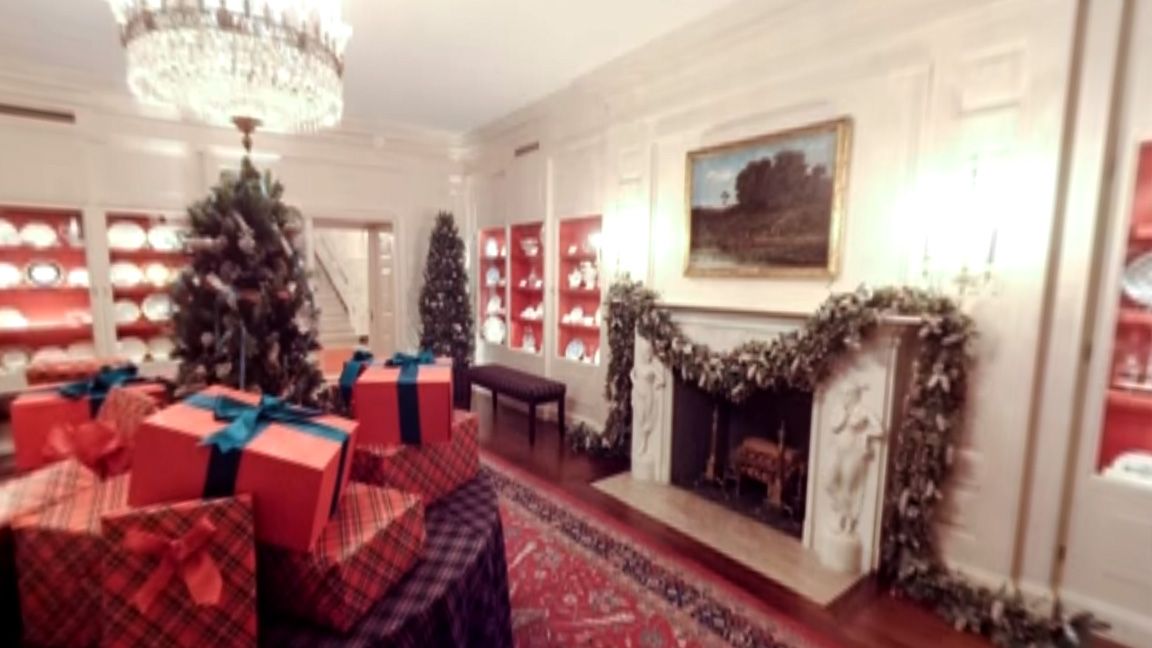Table Of Content
President Washington traveled to the site of the new federal city on July 16, 1792 to make his judgment. His review is recorded as being brief; he quickly selected the submission of James Hoban, an Irishman living in Charlestown, South Carolina. The briefness of Washington's review of the plans may have been due to the majority of the submissions being awkward and naïve. The White House Visitors Centre is worth visiting regardless as a great source of White House history, including details of the building’s architecture and history. There are plenty of fun anecdotes and a comprehensive American Presidential history. Allow an hour or two to do it justice and the visitors centre is open until 4pm daily.
Statement by President Joe Biden on Armenian Remembrance Day
White House facts: White House rooms you probably never knew existed - Business Insider
White House facts: White House rooms you probably never knew existed.
Posted: Fri, 21 Aug 2020 07:00:00 GMT [source]
The Green, Red, and Blue rooms are all used for receptions and small gatherings. The Green Room takes its name from the green silk brocade used as a wall fabric and the matching drapes at the long windows. The Red Room, which is furnished in the style of a 19th-century American Empire parlor, owes its name to the scarlet silk brocade, with a scroll border of gold, that is used as a wall covering. This is an oval room distinguished by the sapphire-blue color scheme of its drapes, upholstery, and carpet.
Southwood
Roosevelt's Little White House at Warm Springs--Presidents: A Discover Our Shared Heritage Travel Itinerary - National Park Service
Roosevelt's Little White House at Warm Springs--Presidents: A Discover Our Shared Heritage Travel Itinerary.
Posted: Sun, 27 Mar 2016 12:15:53 GMT [source]
When the president speaks to the country on television, it is usually from this room. Set on 18 acres of land, the White House is made up of the Executive Residence, the East Wing, and the West Wing, with its famous Oval Office. Today, the residence includes six levels with 132 rooms, including 16 family and guest rooms and 35 bathrooms, and is spread over 55,000 square feet. The White House has been home to every president from John Adams to Joe Biden, and it is an enduring symbol of democracy and one of the most recognizable buildings in the world, attracting 500,000 visitors annually.

Early use, 1814 burning, and reconstruction
The closest Metrorail stations to the White House are Federal Triangle (blue and orange lines), Metro Center (blue, orange, silver, and red lines), and McPherson Square (blue, orange, and silver lines). Early maps referred to the White House as the “President’s Palace,” but in 1810, the building was officially named “Executive Mansion” in order to avoid any connection to royalty. The residence has also been called “President’s House,” or “President’s Mansion.” In 1901, President Theodore Roosevelt changed the official name to “White House,” a moniker that had been used throughout the 19th century. Not long after the inauguration of President George Washington in 1789, plans to build an official President’s House in a federal district along the Potomac River took shape. A contest to find a builder produced a winning design from Irish-born architect James Hoban, who modeled his building after an Anglo-Irish villa in Dublin called the Leinster House. The second president of the United States, John Adams, moved into the still-unfinished presidential mansion on November 1, 1800.
North of Montana
The practice continued until 1885, when newly elected Grover Cleveland arranged for a presidential review of the troops from a grandstand in front of the White House instead of the traditional open house. President Bill Clinton briefly revived the New Year's Day open house in his first term. Few people realize the size of the White House, since much of it is below ground or otherwise minimized by landscaping. Ever since Theodore Roosevelt moved his workspace from the residence to the newly built West Wing in 1902, the two-story West Wing has been home to the U.S. presidential offices. In addition to the Oval Office, the West Wing complex includes the Situation Room, Cabinet Room, Roosevelt Room and press briefing room, among others.
President George Washington called for the residence to have “the sumptuousness of a palace, the convenience of a house, and the agreeableness of a county seat.” The contest was won by James Hoban, an Irish American architect. His design is said to have been suggested by the palace of the duke of Leinster in Dublin, Ireland. The site—about 1.5 miles (2.4 kilometers) west-northwest of the Capitol building—had been chosen by President Washington. The north portico was built in 1824, and though architect Benjamin Henry Latrobe proposed similar porticos during the rebuilding after the fire in 1814, both porticos were designed by Hoban. Contrary to a frequently published myth, the north portico was not modeled on a similar portico on another Dublin building, the Viceregal Lodge (now Áras an Uachtaráin, residence of the president of Ireland).
The south side, with its semicircular portico, overlooks a beautiful park with a broad lawn, flower gardens, and wooded groves. The South Lawn is considered the private park of the president and his family, though it is sometimes used for public events. The most famous of these is the White House Easter Egg Roll, which is held each year on the Monday after Easter.
Westpark II
Burned to the ground by the British in August 1814, the President’s House was nearly left in its smoldering remains as lawmakers contemplated moving the capital to another city. Instead, Hoban was brought back to rebuild it nearly from scratch, in some areas incorporating the original, charred walls. Upon reassuming residency in 1817, James Madison and his wife Dolley gave the home a more regal touch by decorating with extravagant French furniture. The area that became Los Angeles was originally inhabited by the indigenous Tongva people and later claimed by Juan Rodríguez Cabrillo for Spain in 1542. The city was founded on September 4, 1781, under Spanish governor Felipe de Neve, on the village of Yaanga.[18] It became a part of Mexico in 1821 following the Mexican War of Independence. In 1848, at the end of the Mexican–American War, Los Angeles and the rest of California were purchased as part of the Treaty of Guadalupe Hidalgo and became part of the United States.
After the passing of the Residence Act, Philadelphia was the temporary capital where President George Washington stayed as the federal city was being built. Construction of the White House began after deliberations by the federal authorities and a design competition that determined the look of the White House. The foundation was laid in 1792 by a labor force of African American slaves, free African American laborers, and other immigrants who were yet to legalize their status in America, many of whom were from Europe.
A final major overhaul took place after Harry Truman entered office in 1945. With structural problems mounting from the 1902 installation of floor-bearing steel beams, most of the building’s interior was stripped bare as a new concrete foundation went in place. The Trumans helped redesign most of the state rooms and decorate the second and third floors, and the president proudly displayed the results during a televised tour of the completed house in 1952. Architect Eric Gugler more than doubled the space of what was becoming known as the “West Wing,” added a swimming pool in the west terrace for the polio-stricken president, and moved the Oval Office to the southeast corner. A new east wing was constructed in 1942, its cloakroom transformed into a movie theater.
In 1814, during the War of 1812, much of Washington was burned by British troops in retaliation for burning Upper Canada's Parliament Buildings in the Battle of York (present day Toronto), leaving the White House gutted. A legend merged that during the rebuilding of the structure white paint was applied to mask the burn damage it had suffered, giving the building its namesake hue. This is unfounded as the building had been painted white since its construction in 1798. Construction began with the laying of the cornerstone on October 13, 1792. While the White House remains a continuing symbol of American democracy, the house also reflects the nation's early involvement with the institution of slavery.
They were joined by skilled stonemasons from Edinburgh, Scotland, in 1793. Because of crowding within the executive mansion itself, President Theodore Roosevelt had all work offices relocated to the newly constructed West Wing in 1901. Eight years later, in 1909, President William Howard Taft expanded the West Wing and created the first Oval Office, which was eventually moved and expanded. In the Executive Residence, the third floor attic was converted to living quarters in 1927 by augmenting the existing hip roof with long shed dormers. A newly constructed East Wing was used as a reception area for social events; Jefferson's colonnades connected the new wings. The East Wing alterations were completed in 1946, creating additional office space.
While George Washington chose the site and design of the White House, he did not ever live in the residence. John Adams was the first president to live in the White House, moving in on November 1st, 1800. The executive mansion has been the official residence of every subsequent president. A small East Wing was first added in 1902 as an entrance to the White House.

No comments:
Post a Comment